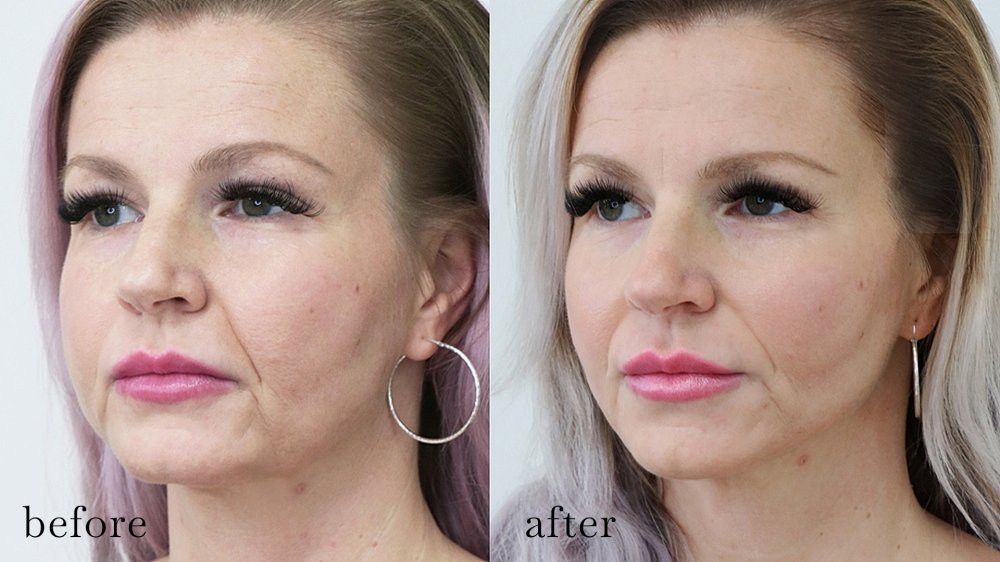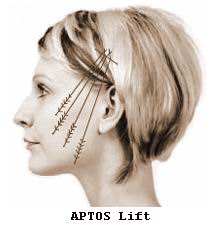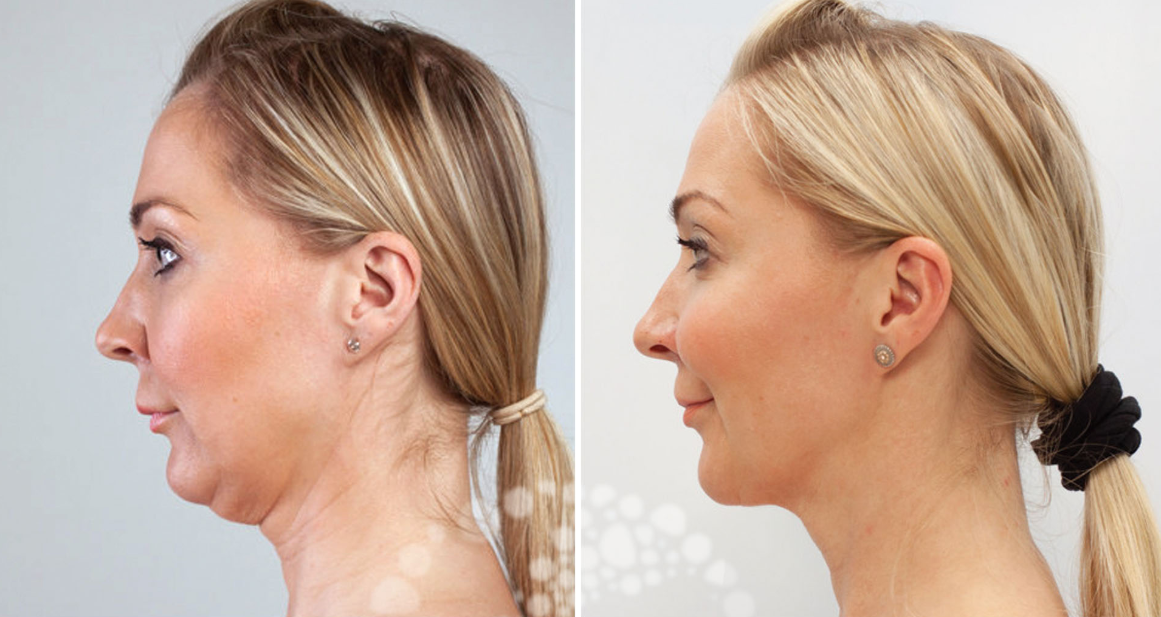
APTOS procedures represent a revolutionary advancement in minimally invasive facial rejuvenation techniques. Originating in the early 1990s, APTOS (Anti-Ptosis Threads) utilize specially designed threads to lift and tighten sagging skin without the need for traditional surgical facelifts. Unlike invasive surgeries, APTOS thread lifts provide a quick, effective, and safer alternative for patients seeking subtle to moderate facial rejuvenation with minimal downtime.
These procedures harness the power of absorbable sutures equipped with barbs or cones that anchor into subdermal tissues. Once inserted, they mechanically elevate the facial soft tissues and stimulate natural collagen production, resulting in firmer, more youthful skin texture and contour enhancement.
The popularity of APTOS has grown worldwide, embraced by plastic surgeons and dermatologists for treating age-related skin laxity, restoring volume, and improving facial symmetry. The technique is suitable for various facial areas including the cheeks, jawline, neck, eyebrows, and nasolabial folds.
This article offers an extensive exploration of APTOS procedures, including causes and risk factors associated with facial aging, clinical indications, diagnostic evaluation, treatment options, complication management, and post-procedure care.
APTOS thread lifting addresses the multifactorial process of facial aging, which involves both intrinsic and extrinsic factors leading to structural and aesthetic changes:

1. Intrinsic Aging
- Loss of Collagen and Elastin: Natural decline in dermal proteins causes skin thinning and loss of elasticity.
- Fat Redistribution: Facial fat pads atrophy and descend, contributing to hollowing and sagging.
- Bone Resorption: Aging craniofacial bones reduce structural support for overlying soft tissues.
2. Extrinsic Aging
- Photoaging: Chronic sun exposure accelerates skin damage and collagen breakdown.
- Environmental Pollutants: Increase oxidative stress, exacerbating aging.
- Lifestyle Choices: Smoking, poor diet, and inadequate hydration impair skin health.
3. Genetic and Hormonal Influences
- Genetic predisposition impacts the rate and pattern of facial aging.
- Hormonal changes, particularly menopause, affect skin thickness and hydration.
Risk Factors for Facial Skin Laxity and Aging
- Smoking and tobacco use.
- Prolonged UV exposure without protection.
- Repetitive facial movements and expressions.
- Weight fluctuations causing skin stretching.
- Poor nutrition and dehydration.
The clinical presentation prompting APTOS treatment generally includes:
- Mild to Moderate Facial Sagging: Noticeable drooping of cheeks, jowls, and neck skin.
- Loss of Jawline Definition: Blurring of the mandibular contour.
- Deepening Nasolabial Folds and Marionette Lines: Skin creases that become more prominent with age.
- Eyebrow Ptosis: Drooping of the brow affecting upper eyelid appearance.
- Volume Loss and Skin Texture Changes: Dullness, wrinkling, and uneven skin tone.
- Patient Desire for Minimally Invasive Rejuvenation: Preference for shorter recovery and natural results.
Proper patient evaluation ensures suitability for thread lifting and optimal outcomes.
Medical History
- Comprehensive history including past facial surgeries, skin conditions, allergies, and medications.
- Assessment of contraindications such as bleeding disorders, active infections, or unrealistic expectations.
Physical Examination
- Detailed facial analysis: skin quality, elasticity, degree of laxity, and facial anatomy.
- Identification of areas amenable to thread lifting.
- Photographic documentation for baseline comparison.
Diagnostic Considerations
- Skin type classification to anticipate healing and scarring.
- Evaluation of facial volume and bone structure.
- Consultation about patient goals and procedural limits.
Patient Counseling
- Discuss potential outcomes, limitations, and alternative treatments.
- Review possible side effects and post-procedure care requirements.
APTOS offers a variety of thread types and lifting techniques tailored to different facial concerns.
Types of APTOS Threads
- APTOS Needle Threads: Smooth threads promoting collagen induction and mild skin tightening.
- APTOS Cog Threads: Barbed threads for stronger mechanical lift, ideal for repositioning ptotic tissues.
- APTOS Excellence Visage: Specialized threads designed for delicate areas like the periorbital region.
- APTOS Nano Threads: Ultra-fine threads used to improve skin texture and stimulate regeneration.
Procedure Steps
- Preparation: Cleansing and local anesthesia administration to minimize discomfort.
- Thread Insertion: Using specialized needles or cannulas, threads are introduced into the subdermal layer following predetermined vectors.
- Anchoring and Lifting: Threads engage tissues via barbs/cones, elevating skin and soft tissues.
- Adjustment and Trimming: Threads are adjusted for symmetry and excess is trimmed beneath the skin.
- Collagen Stimulation: Post-procedure, threads promote natural collagen synthesis, enhancing skin firmness over months.
Areas Treated
- Midface and cheeks
- Jawline and jowls
- Neck and submental area
- Brow and forehead
- Nasolabial folds and marionette lines
Combination Approaches
APTOS can be combined with fillers, botulinum toxin, or skin resurfacing for comprehensive rejuvenation.
While APTOS cannot halt aging, certain measures enhance and maintain results:
Prevention Strategies
- Rigorous sun protection to prevent photoaging.
- Healthy lifestyle including balanced diet, hydration, and cessation of smoking.
- Regular skin care with antioxidants, retinoids, and moisturizers.
- Minimizing facial muscle hyperactivity through botulinum toxin if indicated.
Post-Procedure Care
- Avoid vigorous facial movements and strenuous exercise for 1-2 weeks.
- Sleep with head elevated to reduce swelling.
- Apply cold compresses during initial 48 hours.
- Follow instructions on skincare and avoid makeup for 24 hours.
- Attend scheduled follow-up visits to monitor healing.
APTOS thread lifting is generally safe, but patients should be informed of potential risks:
- Common Side Effects: Mild bruising, swelling, and tenderness.
- Thread Visibility or Palpability: Especially in thin skin.
- Infection: Rare; preventable with sterile technique and antibiotics if needed.
- Asymmetry or Uneven Lift: May require revision.
- Thread Migration or Breakage: Very uncommon.
- Nerve Injury or Pain: Extremely rare with proper technique.
- Allergic Reaction: To thread material, very rare.
Patients typically experience significant improvement in facial contour and skin quality:
- Immediate mechanical lifting effect.
- Progressive improvement over 3-6 months due to collagen induction.
- Results lasting 12-18 months, with possibility of retreatment.
- Minimal impact on daily activities and rapid recovery.
- Enhanced self-confidence and satisfaction.
1. What are APTOS procedures?
APTOS procedures are minimally invasive thread lift techniques designed to lift and tighten sagging facial and body tissues using specially designed threads. They stimulate collagen production, improving skin firmness and contour without the need for traditional surgery.
2. How do APTOS threads work?
APTOS threads are made of biocompatible materials inserted under the skin using fine needles. Once placed, they mechanically lift the tissue and promote collagen formation, resulting in gradual and natural-looking skin tightening and rejuvenation.
3. What areas of the face and body can be treated with APTOS?
APTOS procedures can target the cheeks, jawline, neck, eyebrows, and midface, as well as body areas like the arms, abdomen, and thighs where skin laxity is an issue.
4. How long does the APTOS procedure take?
The procedure usually takes between 30 to 60 minutes, depending on the treatment area and number of threads used. It is typically performed under local anesthesia or with minimal sedation.
5. Is the APTOS thread lift painful?
Most patients experience minimal discomfort during the procedure. Local anesthesia is used to numb the area, and some mild soreness or swelling may occur afterward but generally resolves quickly.
6. What is the recovery time after APTOS procedures?
Recovery is quick, with most patients returning to their daily activities within 1 to 2 days. Mild swelling, bruising, or tenderness may last up to a week but can be managed with cold compresses and pain relief.
7. How long do the results of APTOS procedures last?
Results typically last from 1 to 3 years, depending on individual factors like age, skin condition, lifestyle, and the specific thread type used.
8. Are there any risks or side effects associated with APTOS?
Side effects are generally mild and temporary, including bruising, swelling, slight asymmetry, or small bumps under the skin. Serious complications are rare when performed by a trained and experienced practitioner.
9. Can APTOS be combined with other cosmetic treatments?
Yes, APTOS thread lifts can be combined with treatments like Botox, dermal fillers, or skin resurfacing to achieve enhanced and more comprehensive facial rejuvenation.
10. How do I know if I am a good candidate for APTOS procedures?
Ideal candidates have mild to moderate skin laxity and are seeking a less invasive alternative to traditional facelift surgery. A consultation with a qualified specialist can help determine if APTOS is suitable based on your individual goals and skin condition.
The other Cosmetic Procedures are:
Few Popular Hospitals for APTOS Procedures are:
Thailand, Malaysia, Singapore, Turkey and India are the most cost effective locations that offer up to almost 80% savings in comparison to the US.
SurgeryPlanet facilitates a plethora of services to the medical treatment traveler also which includes, a hassle free and discounted travel option, a welcome hand at the airport on arrival, travel in an air-conditioned car, round the clock service & support. Your medical evaluation is pre arranged with the least of waiting time. Once your assessment is complete and found medically fit, the procedure is immediately scheduled without a waiting period. Please read through our Services and Testimonials to understand and select your best options.
Major Treatments Abroad: Obesity / Bariatric Surgery | Spine Surgery | Stem Cell therapy | Fertility treatment | Knee replacement in India and Thailand | Heart Surgery | Organ transplant | Ayurveda Treatment | Heart valve replacement | Hip resurfacing | Hospitals in India and Thailand for Laparoscopic Sterilization| Best hospitals in Asia | JCI & ISO certified Hospitals | Cost effective medical procedures | Healthcare tourism | Complete privacy for affordable cost | Weight loss procedures | Infertility treatment | Board certified physicians | Low cost surgeries
SurgeryPlanet is an Healthcare Facilitator and not a Medical service provider. The information provided in this website is not to be used for diagnosis or treatment of any medical condition or use for any medical purposes. We provide information solely for medical travel facilitation and do not endorse any particular health care provider, hospital, facility, destination or any healthcare service or treatment listed. We are not an agent for, or affiliated to any health care provider, or service listed in our website and is not responsible for health care services provided by them. Choice of hospital or doctor for your healthcare services is your independent decision. Consult your domestic licensed health care provider before seeking the services of any health care provider you learn about from our website.


